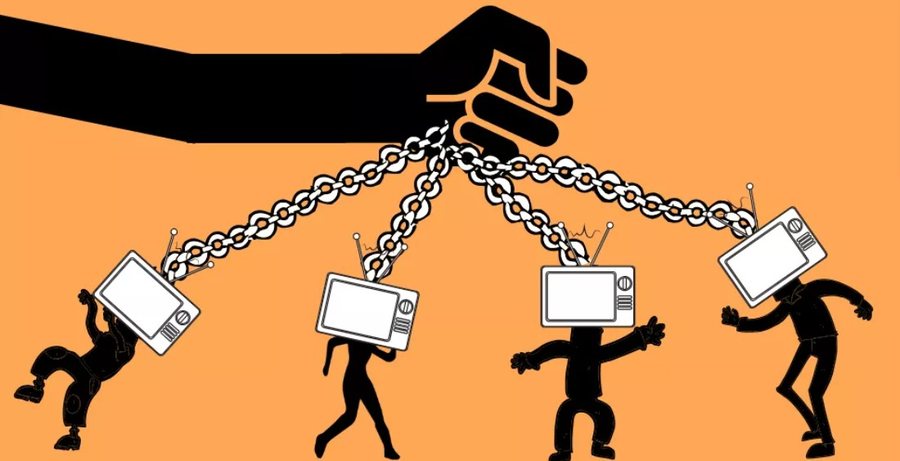
A manipulative campaign with the “cherry-picking” technique, which is denied by its own reference as a source. Analyses and articles published in recent days on the Kosovo Online portal, falsely referred to a conference in Pristina where trends, challenges and countermeasures against extremism were addressed, for the alleged increase in the anti-Serbian narrative in Kosovo. After the international denunciation of Serbia’s interference in the February 9 elections through money, the threat of blackmail (the EU Observation Mission and the German ambassador to Kosovo) and the possibility that a rival party of the Serbian List would win at least one mandate in the Kosovo Assembly, the propagandists of the Vučić regime returned to the narrative of victimization, “choosing” an event in Pristina in order to make it more credible. Alarmed by the beginning of the decline of complete control over Serbian citizens in Kosovo, the media affiliated with Vučić are returning to the old DARVO scheme for their re-immobilization through intimidation.
Fabricated story
The analysis titled “Kosovo in the Claws of Transitional Justice: Why the Anti-Serb Narrative is Growing” begins with a false phrase that does not appear in the Sbunker Report for the conference “The Fight Against Extremism in Kosovo: Trends, Challenges and Countermeasures”. By highlighting the contradictory narratives, the study highlights that ethno-nationalism stems from parallel historical narratives between Albanians and Serbs, especially about the war of the 1990s. “Albanians see it as a war for liberation from Serbian oppression, emphasizing sacrifice, while Serbs consider it a defensive ‘conflict’ against the Albanian uprising, portraying themselves as victims”, states one of the findings of the report. Nowhere is there any mention of the “growth of the anti-Serb narrative”. Therefore, the analysis and other subsequent articles in this line, using the same statements, are nothing more than a strategic amplification of this narrative to address the “culprit”. Other reports such as “The anti-Serbian narrative in Kosovo is constant” or “Mijačić: If Kurti forms the new government, it will continue to damage interethnic relations”, aim to hinder the integration of Serbs in Kosovo, as a long-standing strategy of Vučić to control and instrumentalize them. Through the constant exposure of the audience to such content and by negatively portraying the leaders of Kosovo or the Albanian majority, they reinforce anti-Albanian sentiments as a prerequisite for the goal of sabotaging the state on the international level. References to any minor incident and by prejudging the authorship, make them not only tendentious but also banal compared to racist and inciting manifestations against Albanians. Kosovo Online and other media outlets of the Vučić regime do not report the chauvinistic calls of Serbian groups, institutions and the church against Albanians, while they deliberately hide the facts about the privileged rights of the Serbian minority in Kosovo. By applying such a comprehensive strategy, Serbia continues to mobilize public opinion through nationalist rhetoric against Kosovo. By misusing the media, instrumentalizing religion, false historical narratives, and the role of victimization, it is obstructing liberal perspectives that would enable a new chapter of integration and interethnic coexistence in Kosovo. And Albanians have never manifested racism like Serbian hooligans in football stadiums, like Serbian extremists during religious holidays, or like Serbian terrorists with armed attacks against Kosovo. When the media abandons its obligation to the truth, they become dangerous to society. Despite Milosevic's ethnic cleansing of Kosovo, as documented in the State Department Report (1999), Albanians have proven with the Vienna compromises and later in the Brussels dialogue, that they are not against the Serbian people and against peaceful coexistence in the Republic of Kosovo. Vučić's media knows this,The church knows this and it is confirmed by the constructive engagement of Serbian politicians like Nenad Rasic, whose support seems to have shocked official Belgrade.
DARVO instrument
Serbia continues to not recognize Kosovo’s independence and this is why it is waging a fierce hybrid war against it. Due to its international support and presence with KFOR and EULEX, it has pursued a sophisticated scheme of ‘victimization’, with the aim of undermining Kosovo’s international legitimacy through the influence of international organizations, foreign governments and global public opinion. This aim necessarily requires hindering the integration of the Serbian community, fueling interethnic tensions as a means of maintaining the unstable situation. In this function, the media are an irreplaceable instrument, especially now with their omnipresence as a result of digital development. By ‘bombarding’ the audience with fake news, propaganda and deceptive narratives, they impose a constructed “reality” and belief in inverted roles. To understand this mechanism of abuse, we must refer to the DARVO model (Deny, Attack, Reverse Victim and Offender), originally proposed by American psychologist Jennifer Freyd for couple conflict, but which is now widely applied in political communication and other fields.
The model explains the strategy of manipulation for the purpose of profit:
D – Denial: The narrative of denying the crimes committed during the war, considering them “fabricated” or “propaganda” against Serbia, as the case of the Recak massacre shows. Likewise, the narrative of denying the legitimacy of the declaration of independence of Kosovo by claiming that it violated international law, although the opposite has been proven by the Opinion of the International Court of Justice, based on the request of Serbia itself. Denial in Serbian propaganda also includes history, attempting to present the Albanians as the ‘occupiers’ of Kosovo, despite the fact that the scientific truth is different. By applying these narratives, a basis is created for the attack in order to construct ‘reality’ based on the reversal of the roles of victim and aggressor.
A – Attack: Denial requires fabricated facts that construct a new reality with role reversal. To 'exonerate' Serbia from crimes and genocide in Kosovo, the audience must be fed news that blames "Albanian terrorists" and NATO and the West, as Kosovo Online did, quoting Judge Marinković on January 13, 2023. To "blame" the Albanians, incidents must be fabricated and attacks staged by their own criminal structures, as the Panda case in Peja in 1998 showed. The Martinović case was the same much earlier (1985), about which hundreds of articles and books have been published, with the aim of making it credible. Serbian attacks have also included religion, attempting to present Albanians as Islamic extremists, but also the historical narrative that Albanians have conquered their "cradle". These alone would not produce the desired effect without fabrications against political leaders (Thaci, Veseli, Krasniqi and Selim) who are being tried in the Specialist Chambers in The Hague and attacks on Prime Minister Kurti as the leader who is carrying out the "ethnic cleansing" of Serbs from Kosovo.
RVO – Reversing the Roles of Victim and Abuser: Counting on the effectiveness of denial and attack, Serbia’s hybrid strategy aims to rewrite history in order to profit from the role of victim. With narratives that cultivate a sense of injustice, Serbs are encouraged to believe that they are “the ones suffering” and that Albanians are the “real aggressor.” This is exactly what Kosovo Online and other media outlets run by Vučić are doing, serving to deepen tensions and restore destabilization. Serbia uses this strategy to legitimize its policy of non-recognition of Kosovo, to avoid any international pressure, and to gain territorial advantage whenever the frozen conflict ends. So, DARVO is not just a psychological framework, but a powerful instrument when implemented systematically through media and social platforms. (A2 Televizion)










